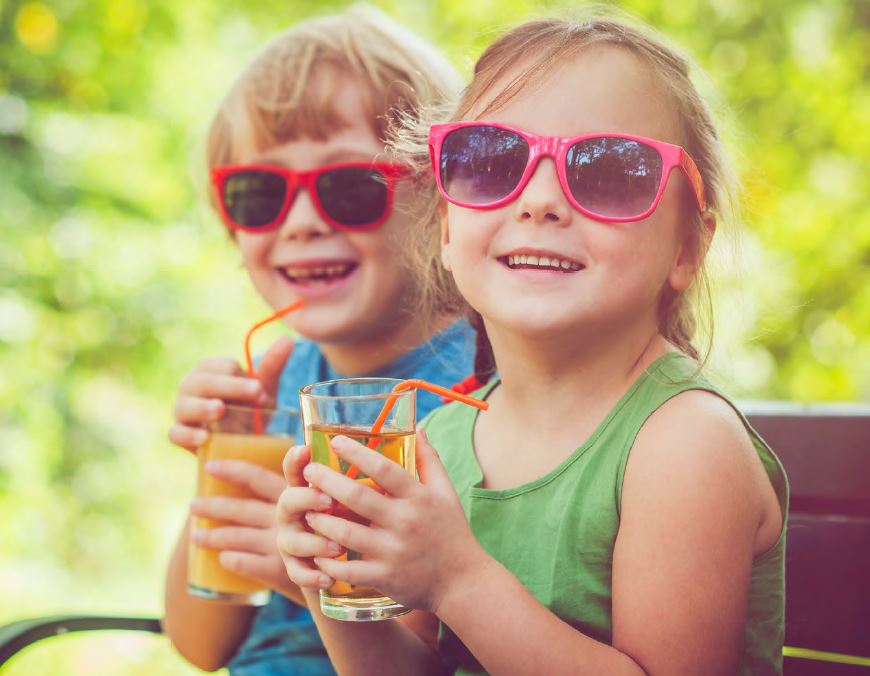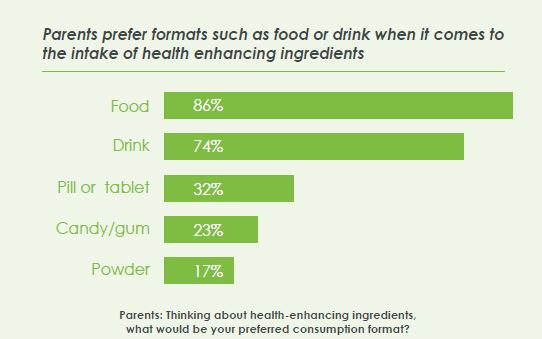The Beverage Innovation Age Gap – How Functional Ingredients Can Close It

The global beverage market is booming. It currently has an estimated value of nearly $850 billion, with the market expected to grow by 12% and predicted to surpass $1 trillion in value by 2022. And with a large market comes opportunity for beverage innovation.
The category includes carbonated soft drinks, functional beverages, sports drinks, fruit beverages and other non-alcoholic drinks. While most of these are purchased by adults, many are consumed by children. For example, more than nine in ten American kids between the ages of 6 and 11 drink juice. In the UK, eight in ten consume fruit juice and smoothies.
Where’s the white space?
Children, then, are undeniably important consumers of beverages. Yet most products are not explicitly created for them, and relatively little new product development in the category is targeted at their specific needs. Between December 2012 and November 2017, just 5% of new water launches, 6% of juice drinks and 6% of other beverages were aimed at kids. By contrast, the figure was 11% for sugar and gum confectionery and 17% for breakfast cereals.

Sugar battleground.
One factor to consider in this innovation gap is the global drive for sugar reduction. This is a war largely being waged to protect the health of children, and one in which beverages are a key battleground. It has increased demand for low-sugar products ― and therefore opportunities for innovation in the beverage category ― but it also creates challenges.
Fruit juice, for example, was traditionally viewed as a natural, healthy choice for children, but in its pure form, it is high in sugar and is now often demonized. Sugar levels can be reduced, but kids won’t accept drinks that don’t taste good, and the addition of sweeteners is detrimental to clean label strategies.
Learn more from our white paper: Closing the Innovation Gap in the Kids’ Beverage Category
Fortifying for health.
So, with parents increasingly wanting to avoid feeding their kids products that are high in sugar or artificial ingredients, how can manufacturers give juices and other beverages a healthy twist?
Increasingly, the answer is the addition of functional ingredients. Globally,  eight in ten parents say their choice of product is influenced by how it will affect their child’s health and well-being. Parents also prefer their kids to get health-enhancing ingredients from food and drink products rather than from pills.
eight in ten parents say their choice of product is influenced by how it will affect their child’s health and well-being. Parents also prefer their kids to get health-enhancing ingredients from food and drink products rather than from pills.
All of this suggests that the enrichment of beverages with nutrients and other functional benefits could help increase the appeal of kids’ drinks in the eyes of parents. And that means it could also give the children’s beverage category a much-needed innovation boost.
Want to better understand the challenges and opportunities in the children’s beverage category? Start by downloading our white paper: “Child’s play: Closing the Innovation Gap in the Kids’ Beverage Category”
Sources:
Euromonitor Passport Analysis, August 2018
Mintel, Kids Should Come First for US Juice Brands, April 2018
Mintel, What Children Drink – UK, June 2018
Mintel, Children’s Nutrition Insight, December 2017
GlobalData, Global Consumer Survey Q3 2018
GlobalData, To Trends in Baby and Child Care, April 2018

